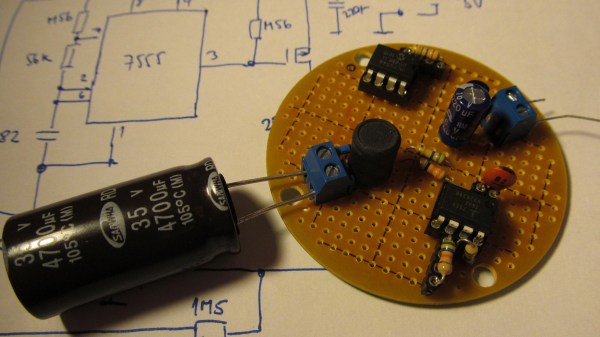In the past half-century, lasers have gone from expensive physics experiments using rods of ruby to cheap cutting or engraving tools, and toys used to tease cats. Advances in physics made it all possible, but it turns out that ruby lasers are still a lot of fun to play with, if you can do it without killing yourself.
With a setup that looks like something from a mad scientist movie set, [styropyro]’s high-powered laser is a lot closer to the ray gun of science fiction than the usual lasers we see, though hardly portable. The business end of the rig is a large ruby rod nestled inside a coiled xenon flash lamp, which in turn is contained within a polished reflector. The power supply for the lamp is massive — microwave oven transformers, a huge voltage multiplier, and a bank of capacitors that he says can store 20 kilojoules. When triggered by a high-voltage pulse from a 555 oscillator and an old car ignition coil, the laser outputs a powerful pulse of light, which [styropyro] uses to dramatic effect, including destroying his own optics. We’d love to hear more about the power supply design; that Cockcroft-Walton multiplier made from PVC tubes bears some exploration.
Whatever the details, the build is pretty impressive, but we do urge a few simple safety precautions. Perhaps a look at [Ben Krasnow]’s 8-kJ ruby laser would help.





















